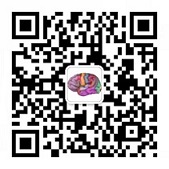Self Limited Familial And Non-familial Infantile Epilepsy
Etiologies: Some are related to familial autosomal dominant inheritance, many of them are closely related to PRRT2 gene mutation (accounts for >90% of cases). In addition, this gene can also lead to paroxysmal kinesigenic dyskinesia (PKD) and there can be different phenotypes in the same family. In addition, some can also have paroxysmal dyskinesia in the later stage, and some affected family members can also have no obvious symptoms). In addition, mutations in genes such as KCNQ2, KCNQ3, SCN2A, GABRA6 can also be related to this disease (some of the above gene mutations can also cause self limited familial neonatal epilepsy and severe developmental epileptic encephalopathy, which are related to different mutation sites and other factors) [1-4].
Age of onset: onset of seizures between 3 and 20 months of age (peak 6 months), and most of them alleviate after 1-2 years.
Seizure characteristics: Focal seizures or secondary generalized seizures are more common (children may show behavior arrest, reduced reaction and damage of consciousness, but these symptoms are often difficult to accurately judge due to their young age and other interference factors. In addition, other symptoms may show head/eye version, increase or decrease of limb muscle tension, cyanosis and automatism of oropharynx (such as chewing, swallowing, smacking, etc.). The seizures are often clustered, especially in the early stage of onset, there can be frequent cluster seizures (sometimes many times in a day). Generally, there will be no continuous hemiclonic seizures more than 10 minutes (if occur, consider whether it is Dravet Syndrome). Generally, the seizures disappear after a few months to 1 year [5].
EEG: Interictal: most EEG were normal. Ictal: it can be characterized by focal mixed fast activity with spikes, and can spread to adjacent or whole brain region. The origin of different seizures can be different [6].
Brain MRI: Most of them are normal.
Developmental progress: Basically normal.
2022 International League Against Epilepsy (ILAE) diagnostic criteria[7]:
Mandatory: Focal seizures occur with behavioral arrest, impaired awareness, automatisms, head/eye version, and clonic movements (often alternating from one side to the other and progressing to a hemiclonic or focal to bilateral tonic-clonic seizure); Seizures are usually brief (<3 min).
Alerts: Prolonged or focal clonic (hemiclonic) seizures (>10 min); EEG Interictal: Mild background slowing; Onset 18–36 months of age; Mild developmental delay; Significant neurological examination abnormalities; Lack of pathogenic variants found in PRRT2, SCN2A, KCNQ2, or KCNQ3 OR Lack of family history suggesting autosomal dominant inheritance with incomplete penetrance; Lack of remission by late childhood.
Exclusionary: Epileptic spasms, Myoclonic seizures, Sequential seizures, Tonic seizures; EEG Interictal: Persistent focal slowing or moderate or greater background slowing not limited to the postictal period; Hypsarrhythmia; Age at onset <1 month or >36 months; Moderate to profound delay Neurocognitive regression; Causal lesion on brain MRI; Neurocognitive regression with myoclonic seizures, ataxia, spasticity.
References
- Heron, S.E., et al., PRRT2 mutations cause benign familial infantile epilepsy and infantile convulsions with choreoathetosis syndrome.Am J Hum Genet, 2012. 90(1): p. 152-60.
- van Roest, A., et al., The clinical and genetic spectrum in infants with (an) unprovoked cluster(s) of focal seizures. Eur J Paediatr Neurol, 2020. 24: p. 148-153.
- Nardello, R., et al., Benign familial infantile epilepsy associated with KCNQ3 mutation: a rare occurrence or an underestimated event? Epileptic Disord, 2020. 22(6): p. 807-810.
- Berkovic, S.F., et al., Benign familial neonatal-infantile seizures: characterization of a new sodium channelopathy.Ann Neurol, 2004. 55(4): p. 550-7.
- 刘晓燕. 临床脑电图学. 第2版. 北京 : 人民卫生出版社, 2017.
- Panayiotopoulos. 癫痫综合征及临床治疗. 北京 : 人民卫生出版社, 2012.
- Zuberi, S.M., et al., ILAE classification and definition of epilepsy syndromes with onset in neonates and infants: Position statement by the ILAE Task Force on Nosology and Definitions. Epilepsia, 2022. 63(6): p. 1349-1397.

 English
English  简体中文
简体中文 